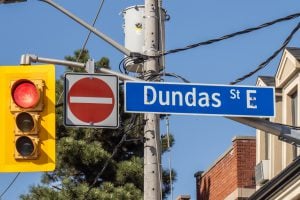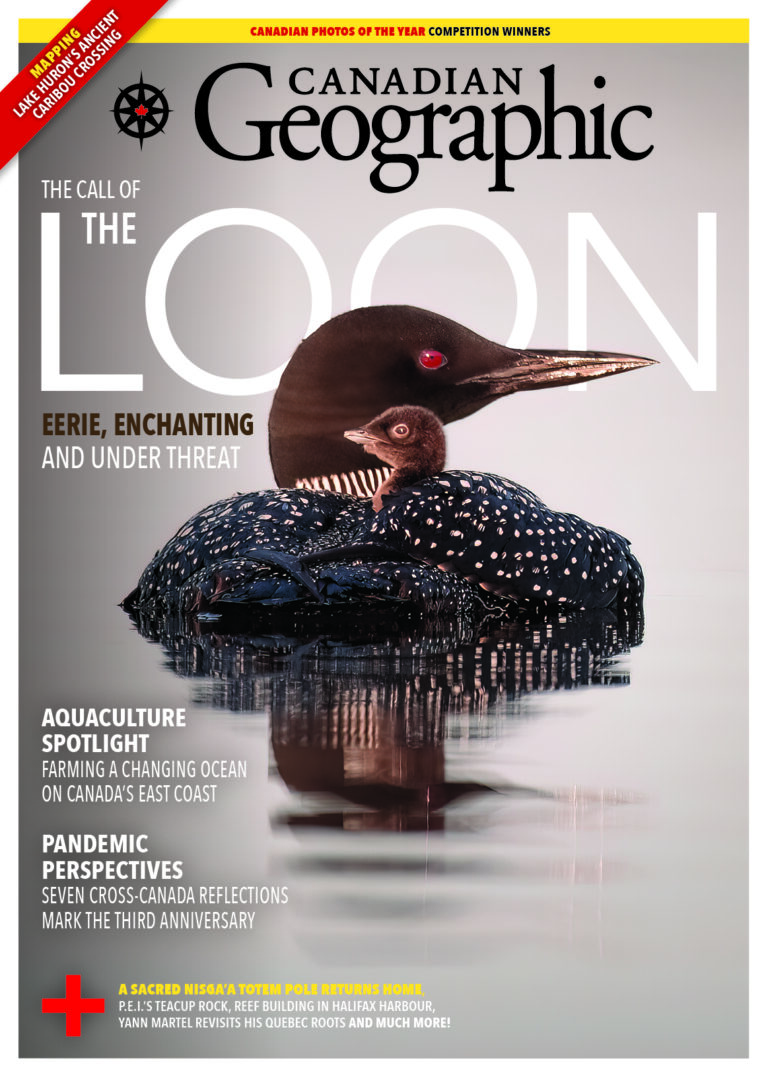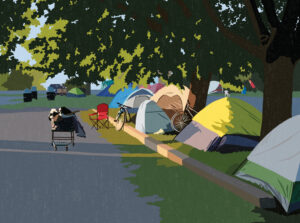
People & Culture
Renaming places: how Canada is reexamining the map
The history behind the Dundas name change and how Canadians are reckoning with place name changes across the country — from streets to provinces
- 4574 words
- 19 minutes
People & Culture
How I rediscovered focus in isolation at my B.C. cabin in the woods

Placing the Pandemic in Perspective is a multimedia project to collect and share how Canadians’ experiences of the COVID-19 pandemic were — and continue to be — shaped by place. Visit the project website to read more stories and add your own.
The story is told starkly in my credit card statements. In the line items from March and April 2020, I spent expansively: donations to fundraisers, subscriptions to magazines and newspapers, take-out meals from shuttered restaurants. Then, sometime in the spring, my profligacy came to a screeching halt. At some point, I had looked up from my worries about struggling local businesses and realized I was in trouble too.
For me, a freelance writer who often travels for work, the world coming to a standstill hit hard. Suddenly, magazines that relied on advertising dollars from airlines and hotel chains were slashing their budgets — or closing down entirely. Meanwhile, the Yukon government had implemented strict travel restrictions. Even if I wanted to hop on a plane, and even if I could find a publication to pay me to travel, I would be required to spend 14 days in isolation every time I came home. I wasn’t sure I could handle that. Nor did I want the risk and responsibility of travelling out of territory and coming home with a dangerous virus.

In the six months before the pandemic, I had travelled from Alaska’s Aleutian Islands to England’s Lake District, and from San Diego and Seattle to Thunder Bay. Now I was grounded, and I worried about how I was going to pay my bills. My solution was to downsize. I gave notice on my two-bedroom apartment in Whitehorse, put most of my stuff in storage and signed a lease for a one-room cabin in Atlin, a tiny off-grid community two hours south, just over the border in British Columbia. In ordinary times, the cabin had been a holiday rental for tourists. Now it was a life raft.
My days at the cabin were different. Aside from the post office, the grocery store and the laundromat, there was nowhere to go. Through the windows, I watched the sun rise and set on Atlin Mountain. I walked my dog along forest trails until the snow drifted too deep, and then I explored the town’s small network of streets. Every so often, when the weather allowed, I drove the icy road from Atlin back to Whitehorse, blasting the heat in my aged Toyota Corolla and watching for caribou on the shoulder.
The world had become so much smaller, but somehow it was in sharper focus: I felt myself lingering on details I hadn’t noticed before. Half a dozen ravens, their feathers fluffed up against the cold, sitting on the roof ridge of an abandoned building, red paint peeling. The ice beginning to form crystalline bridges between the water-rounded rocks on the lake’s shore, the calmest water freezing over first. A neighbour’s brass weather vane turning in the wind. Narrow deer tracks in the snowy streets.
At home I embraced a different kind of slowing down. In the cabin’s fully stocked kitchen, I had access to the kinds of dishware I’d never bothered to buy in the past. On New Year’s Eve, I spent half a day standing over the stove, watching thinly sliced white onions turn ever so slowly golden brown, just for an excuse to use the classic French onion soup bowls I’d found in the cupboard. I made rice pudding in red enamel ramekins and, for the first time ever, took the time to grate a huge pile of potatoes and make my own homemade latkes. These were the kinds of things I’d always told myself I didn’t have time for. I’d lived with a suitcase perpetually open on my bedroom floor, sitting either half unpacked or waiting to be filled again. At first I missed that life — and then I began to wonder if I really wanted it back.
The travel restrictions are long gone now. I can get on a plane if I want to, and sometimes I do. I’m back in Whitehorse, and the bars, coffee shops and restaurants are open. But I haven’t let go of everything the cabin taught me. This fall, I made my first pie from scratch. When I walk the dog around the neighbourhood, I take the time to notice the hoarfrost lying thick on the branches of trees. I try to remember the lesson of that first pandemic year: to make a home out of the little details, wherever I go.
Are you passionate about Canadian geography?
You can support Canadian Geographic in 3 ways:

This story is from the March/April 2023 Issue

People & Culture
The history behind the Dundas name change and how Canadians are reckoning with place name changes across the country — from streets to provinces

People & Culture
For unhoused residents and those who help them, the pandemic was another wave in a rising tide of challenges

People & Culture
The story of how a critically endangered Indigenous language can be saved

People & Culture
The death of an unhoused Innu man inspired an innovative and compassionate street outreach during the nightly curfew in 2021